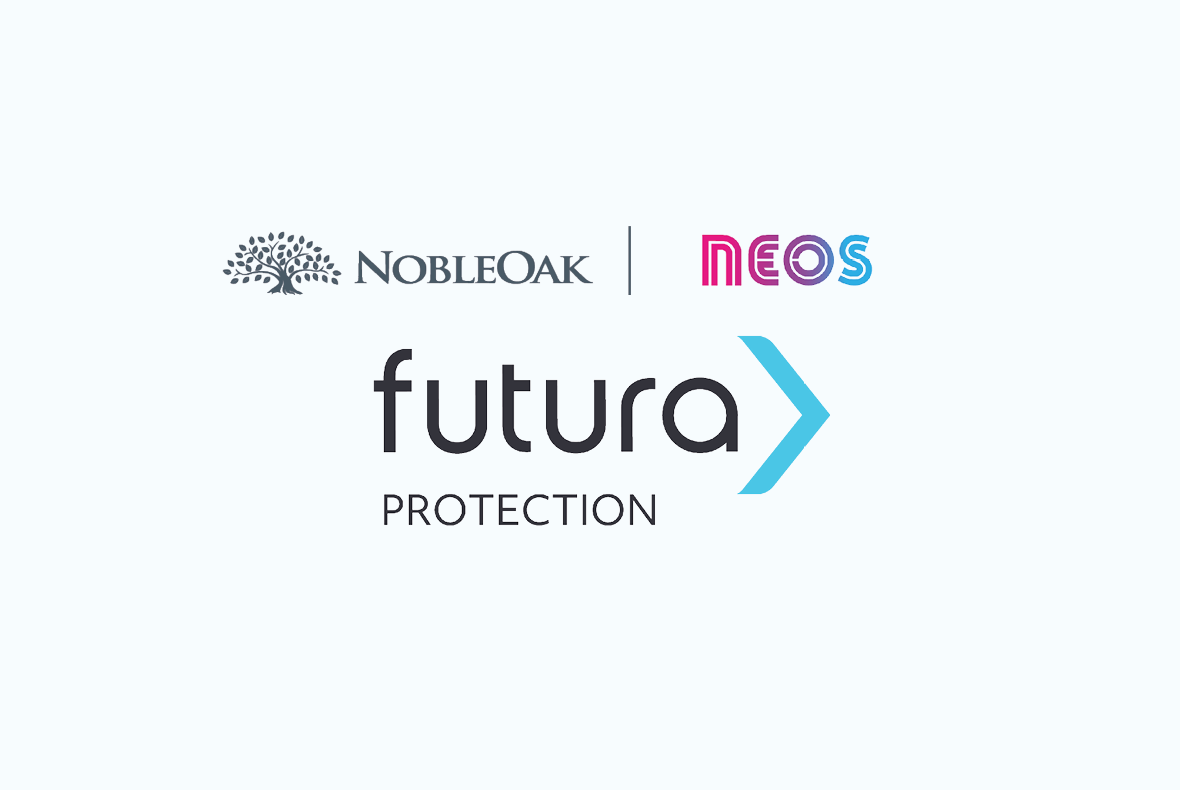Life Insurance and Superannuation: What You Need To Know
Life insurance provides a payout for your family if you pass away (or are diagnosed with a terminal illness). Millions of Australians have life insurance within their superannuation – this is sometimes known as ‘group’ or ‘bulk’ Life Insurance because super funds provide coverage for their large member population by buying in bulk.
In this guide, we’ll explain everything you need to know about life insurance and superannuation. We’ll also provide information about seeking life insurance from a specialist direct life insurance provider such as NobleOak.
How does life insurance inside your superannuation work?
Life insurance through superannuation was once commonplace – a 2010 report from the Australian Treasury showed that 76% of Australians had life cover through their super fund, and in 2021 APRA (Australian Prudential Regulation Authority) stated that “almost 70 per cent of Australians who have life insurance, hold it through their superannuation.” However, new ASFA research released in February 2024 identified a 36% decrease in the number of Australians with super fund life insurance. This may partly be due to Australian government reforms in 2019 and 2020 respectively which introduced automatic insurance cancellation for inactive super accounts (no contributions for 16 months) and opt-in insurance for young members under 25 and those with low balances (less than $6,000).
Life Insurance through superannuation is a policy held within a super fund. Many super funds include some form of life coverage, such as:
- Life cover: Also known as ‘death cover’, this provides a lump sum payment to your beneficiaries if you pass away or are diagnosed with a terminal illness.
- Total and Permanent Disability (TPD) insurance: Provides a lump sum payment if you become permanently disabled and are unable to work in any occupation again due to illness or injury.
- Income Protection insurance: Provides regular payments – typically a percentage of your income – if you are unable to work due to illness or injury.
The premiums are paid from the member’s super balance, rather than out of pocket. Many super funds offer automatic cover, but members can adjust or opt out of the policy based on their needs.
Not all super funds automatically offer life cover. Additionally, the specific policy details will differ depending on the super fund.
Types of super funds
Here are some common types of super funds in Australia:
- Employer super fund: This is a superannuation fund chosen by an employer for their employees, often a retail or industry fund.
- Self-managed super fund (SMSF)*: An SMSF is a private superannuation fund that individuals manage themselves, allowing them to control investments and retirement savings.
- Super platform partners: These are financial institutions that offer investment, administration, and reporting platforms for managing superannuation funds. They’re often used by financial advisers to help clients manage their super portfolios.
*If you set up your own self-managed super fund, you will need to consider and organise your own life insurance. NobleOak offers SMSF life insurance products – for more information, please visit our guide to Life Insurance within an SMSF.
Advantages of life insurance inside your superannuation
Life insurance in superannuation has multiple advantages. These include:
- Convenience: When your super fund automatically includes life cover, this can save you the hassle of organising a separate life insurance policy.
- Cost-effectiveness: Premiums are paid directly from your super balance, which means you don’t have to pay from your take-home income. Additionally, super funds may be able to provide insurance premiums at a lower cost due to the bulk number of policies they purchase.
- Automatic coverage: Many super funds provide default coverage, ensuring some level of protection without requiring medical assessments.
- Tax advantages: There may be tax benefits to contributions into your super which are employer super contributions (and in many instances, ‘salary sacrifice’ contributions) taxed at a maximum rate of 15%, which is lower than the marginal tax rate on most people’s income. Before making any taxation decisions you should discuss superannuation and salary contributions with a qualified tax professional.
- You may be able to get a package deal: Some super funds allow you to obtain a combined policy, one that includes Life Insurance, TPD, and Income Protection cover. However, these types of cover are likely to be limited and potentially may not adequately meet your needs.
Disadvantages of life insurance inside your superannuation
On the flip side, life insurance within super can come with some drawbacks. These can include:
- Cover held may be inadequate: ‘Bulk’ or ‘group’ life insurance generally isn’t able to be tailored for your individual family needs or life stages. Unless nominated, your cover may automatically reduce as your individual life risk increases. NobleOak’s most recent Pulse Report surveyed over 1,000 participants in January 2025. Of those who held life insurance through their superannuation (372 people) 27% believed they had less cover than they needed.
- Costs: Because bulk or group insurance generally isn’t underwritten for your personal situation, it’s possible you could end up paying more than if you were to purchase fully underwritten insurance which considers factors like your age, gender, current health and smoking status.
- Limited coverage: Default life insurance through super may not provide enough coverage to fully protect you and your family. Super funds typically offer automatic cover with set benefit amounts, but these may be lower than what’s needed to cover large financial commitments like a mortgage, living expenses, or future education costs for dependents. Additionally, default policies may not include features like TPD Insurance or Income Protection insurance.
- You may be under insured. The Rice Warner ‘Underinsurance in Australia 2020’ report indicated there is an insurance gap between how much cover many Australians have through super, and how much they may need. The report stated, “the median default cover of superannuation funds meets approximately 65% to 70% of basic level death cover needs for average households, but a much lower proportion for families with children.”
- Potential delays in claim payouts: Benefits must be processed through the super fund first before reaching beneficiaries. The insurance payout in the event of a successful claim goes to the trustees of the fund who then consider whether the payment meets superannuation release conditions.
- Impact on retirement savings: When premiums are paid from your super fund, this can mean less money invested over time towards retirement.
- Tax implications on payouts: Life Insurance benefits paid through super may be taxed, especially if the beneficiary is not a dependant.
- Not transferable between funds: Prior to the 2005 introduction of Super Choice, which enables workers to nominate their own super funds, many employees ended up with several funds as they shifted between jobs. If this has happened to you, it’s important to note that if you roll over all your super account balances into one fund, any life insurance held within the funds you are exiting cannot be transferred to the new fund. The same principle applies if you choose to change from one fund to another at any time.
- There may be an expiry date: If your superannuation ends at retirement age, any life insurance cover may too. This could be something you need to consider.
How does life insurance outside your superannuation work?
An alternative to life insurance through super is getting a policy directly from a business (such as NobleOak) that specialises in life insurance products. These types of policies can offer greater flexibility and higher coverage limits, allowing you to tailor the sum insured to meet your personal and family needs.
At NobleOak, we offer Life Insurance directly to you, without adviser fees or built-in overheads. As part of our suite of life insurance products, NobleOak also offers:
- Income Protection Insurance
- Trauma Insurance
- TPD Insurance (as an optional extra with Life Insurance)
- Business Expenses Insurance
NobleOak Life, TPD, and Income Protection cover can also be purchased through an SMSF if required.
Advantages of purchasing life insurance outside your superannuation
Here are some of the main advantages to having a life insurance policy from a provider such as NobleOak, rather than life insurance in super:
- Tailored coverage: Policies can be tailored to your specific needs, including higher coverage amounts, additional benefits like trauma cover, and more comprehensive protection. Additionally, you pay for your level of risk rather than on a group level like you would in a policy through your super. This means you’re paying for your individual level of risk, and you know what you are covered for, which provides more certainty at claims time.
- Potentially faster claim payouts: Funds are paid directly to your beneficiaries, bypassing the superannuation system, which can reduce delays and ensure quicker financial support.
- Greater control: Policyholders can directly nominate beneficiaries, avoiding the restrictions and tax implications that may apply when life insurance is held within superannuation.
- Comprehensive underwriting: Stand-alone policies, like NobleOak’s fully underwritten Life Insurance, involve a detailed assessment at the time of application, potentially reducing uncertainty at claim time.
- No superannuation restrictions: Payouts are not subject to superannuation release conditions, ensuring beneficiaries can access the full benefit without meeting specific eligibility rules.
- Potential tax benefits: premiums are not tax-deductible (unlike super-held policies), the payout is generally tax-free for all beneficiaries.
- Longer coverage periods: With NobleOak’s Life Cover, the policy can usually be held to age 99 (as long as you continue to pay your premiums) unlike life insurance inside super, which often usually ends at age 70 although some funds may extend it to 75. Additionally, cover continues if you pay your premiums, whereas super life insurance may cease if you stop contributing to super or if your balance is too low.
Disadvantages of life insurance outside your superannuation
While life insurance outside superannuation offers greater control and flexibility, it also comes with some potential downsides. Here are a few key disadvantages to consider:
- Higher out-of-pocket costs: Premiums for life insurance outside super are typically paid from after-tax income, meaning you won’t benefit from the tax advantages that come with paying premiums through your super .
- Affordability concerns: Without the group discounts that super funds often offer, premiums can be higher for standalone policies, making coverage less affordable for some individuals.
- No automatic cover: Unlike life insurance through super, which often provides default coverage, individuals with life insurance outside super must apply and may be required to answer health and lifestyle questions which may include medical assessments in some cases.
- Risk of lapse in coverage: Since premiums are paid separately (compared with automatic payments from super contributions), there is a risk of forgetting or being unable to pay premiums, leading to a lapse in coverage.
Inside vs. outside superannuation: Key factors to consider
When you’re making a decision between life insurance from your super fund, or life insurance from an insurer agency such as NobleOak, here are some points to consider:
- Personal financial situation: Consider your ability to afford premiums, especially when paying from after-tax income for life insurance outside of super. Also, evaluate the potential tax implications of holding insurance inside or outside of super.
- Insurance needs: Assess whether the default cover offered by your super fund is sufficient to meet your needs or if a more tailored, comprehensive policy outside of super is necessary. If life insurance is important to you to help protect your family’s financial future, the one-size-fits-all approach provided by most super funds may not offer sufficient protection.
- Beneficiary considerations: Think about who will receive the benefit in the event of a claim and how quickly they may need the funds. Life insurance outside super can provide faster payouts directly to beneficiaries, while insurance within super may involve delays due to superannuation rules.
- Tax benefits: Compare the potential tax liabilities for insurance payouts held inside versus outside super. Payouts from life insurance inside super can be subject to tax depending on the recipient, while payouts outside super are often tax-free for beneficiaries.
- Your age: Cover inside super for younger people is generally not a good option as they have very few assets within super to pay the premiums. As a consequence, the Federal Government has made life insurance within super cover an opt-in for people under 25.
- Life cover in super can be topped up: If you do have existing cover through your super fund, it’s important to know that you don’t have to rely on this coverage alone. Most superannuation funds will provide you with options to increase your cover (you may need to provide additional medical information) or you can shop around for a life insurance quote and top up your super policy with an independent policy.
- Life Insurance inside your SMSF: If you are the trustee of an SMSF, it’s important to know that you are required by law to consider whether the members of the fund wish to take out life or other insurance. Please note that some direct life insurers such as NobleOak can offer you life insurance through your SMSF.
- Package deals: In many cases, your super fund’s default life cover is packaged with TPD and/or income protection insurance. Outside of superannuation, TPD and income protection insurance are generally optional extras to a life cover policy. If you take out life insurance independently of your super, you might be able to access higher levels of cover. Whether you decide to keep your insurance within your super or take out a stand-alone policy, if you are seeking insurance to look after your family in a worst-case scenario, then it might be a good idea to consider if TPD and income protection insurance should be included in your insurance policy portfolio.
Award-winning life insurance
If you’re looking for more flexibility, higher coverage, and direct control over your beneficiaries, NobleOak’s Life Insurance may be the right choice for you.
We offer comprehensive life insurance products which can be tailored to suit your financial situation. Take the next step today by using our online quote tool or calling our knowledgeable team on 1300 041 494.
Any financial product advice is general in nature only and does not take into account your individual circumstances, objectives, financial situation, or needs. Before acting on it, please consider the appropriateness of the information, having regard to those factors. Any third party websites or tools referred to are subject to their own terms and conditions and NobleOak Life Limited makes no representation or warranty as to any information on those websites. Persons deciding whether to acquire or continue to hold life insurance issued by NobleOak Life Limited should consider the relevant Product Disclosure Statement and Target Market Determination for the product. NobleOak Life Limited ABN 85 087 648 708 AFSL 247302.
Related articles


Income Protection Insurance & Superannuation: Inside vs Outside Superannuation



